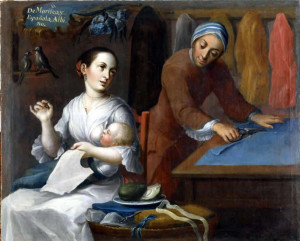Dear members, please see the following letter from ANZAMEMS committee member Kriston Rennie:
Dear Colleagues,
I am writing to you en masse to gather some intel about past, present, and future research endeavours in the field of medieval monastic history. In anticipation of a symposium to be held in Dresden later this year (27-29 October), I am trying to assemble a complete picture of the work being done in Australia and New Zealand. I have been asked by the Forschungsstelle für Vergleichende Ordensgeschichte (FOVOG) at TU Dresden to ‘represent’ our region, with a view to establishing more active and international networks with scholars from Europe (east and west), North America, and South America. Celebrating 20 years of study into comparative religious orders, the FOVOG would ideally like to assess the international state of research, ‘to generate and illustrate new perspectives on the exploration of vita religiosa in order to envisage new projects.’ The ‘workshop’ promises to gather 40-50 scholars from around the world; all have been tasked with the same responsibility.
There is a great interest in Germany about our respective countries, and I would like to represent our research ambitions, funding opportunities, and collaborations accurately. To my mind, this is an exciting opportunity to showcase our work (projects, grants, publications, etc.), to explain the current situation of our universities and funding systems, and ultimately to initiate some profitable connections. My thinking is not limited solely to our own research, but also to the work of our MPhil and PhD students, and post-docs. Discussion on ‘research clusters’ and ‘areas of expertise’ should also, in my opinion, take into account possible supervisory arrangements with other countries and institutions. I’m certain, for example, that colleagues here in Germany would be fascinated by the possibility of ‘linkage grants’ and the Australian-DAAD scheme, and to learn about our active society, biennial conference, and postgraduate training seminars. In other words, I don’t perceive this invitation as being about drawing Australia and New Zealand into a European framework; it offers the potential to work also in the other direction, to the benefit of all invested parties.
So, in essence, I am asking for expressions of interest – so to speak. If you have an interest in the field of medieval religious orders and/comparative religious history, please contact me to share your thoughts, ideas, and plans. If you have publications and/or current work in this field, please bring them/it to my attention. If you have a firm grasp of our strengths (e.g., Dominican, Cistercian), please share your thoughts. If you’ve already got some profitable links (formal or informal), please let me know. And if there is something or someone that you feel should must not be overlooked in our presentation to an international forum, I’d be extremely grateful for your insight and perspective.
I can be reached anytime through my work address: k.rennie@uq.edu.au.
I look forward to hearing from you soon (preferably before 1 August. 2016).
Sincerely,
Kriston Rennie

